The evolution of technology has revolutionized our daily lives. Today, more than ever, we find ourselves uniquely intertwined with modern innovations. Home smart speakers are a testament to this, incorporating virtual assistants, voice control, and home automation.
Smart speakers can do far more than play your favorite tracks at a single voice prompt; they can dramatically improve your home efficiency. Whether you’re looking to improve home automation or have an easier way to shop, smart speakers can do the job. Keep reading as we cover the best home smart speakers and detail why they’ve earned their place on this list.
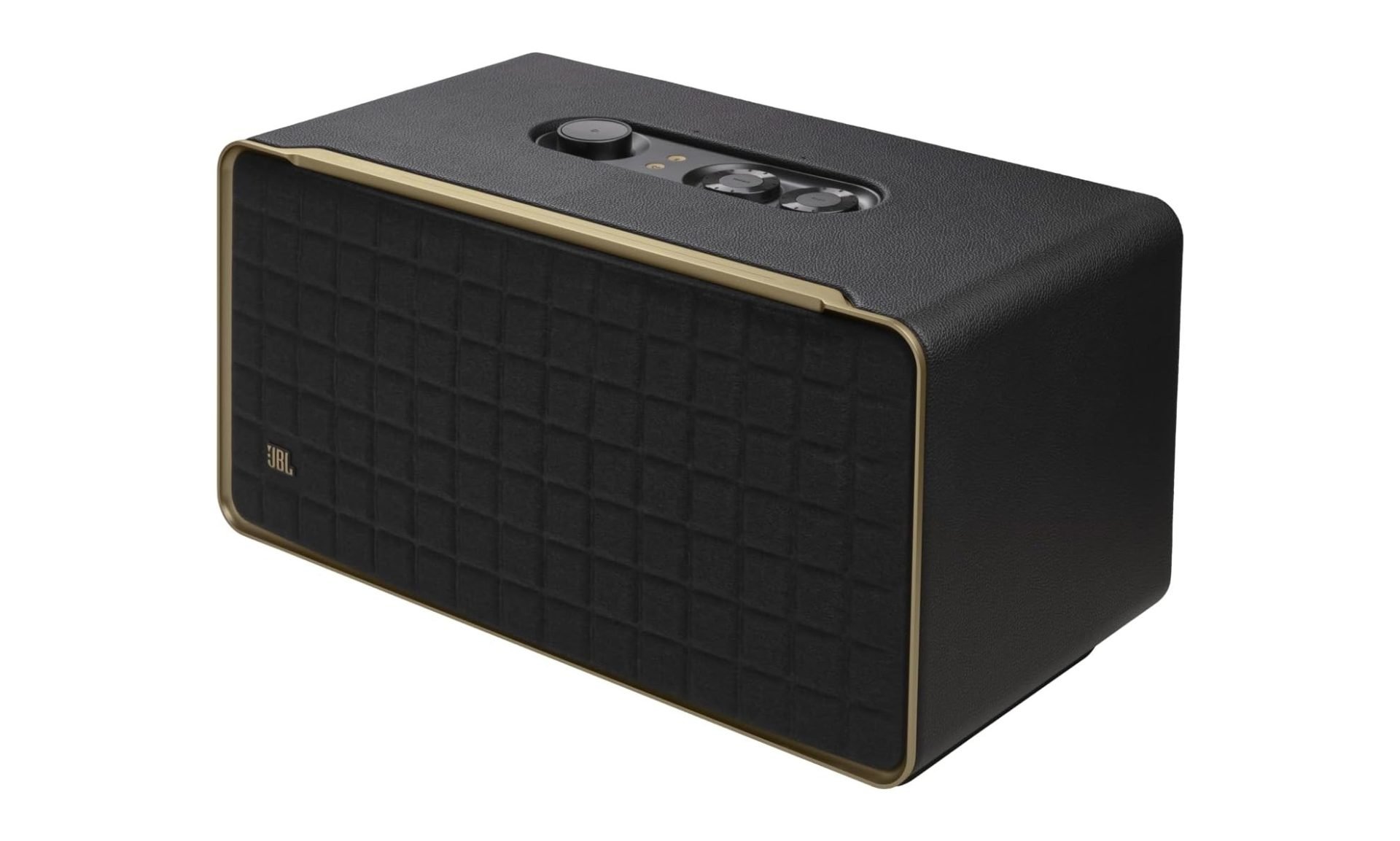

JBL Authentics 500
The Authentics 500 is an excellent smart speaker that offers high-fidelity audio in a unique and effective design.
Our Top Picks
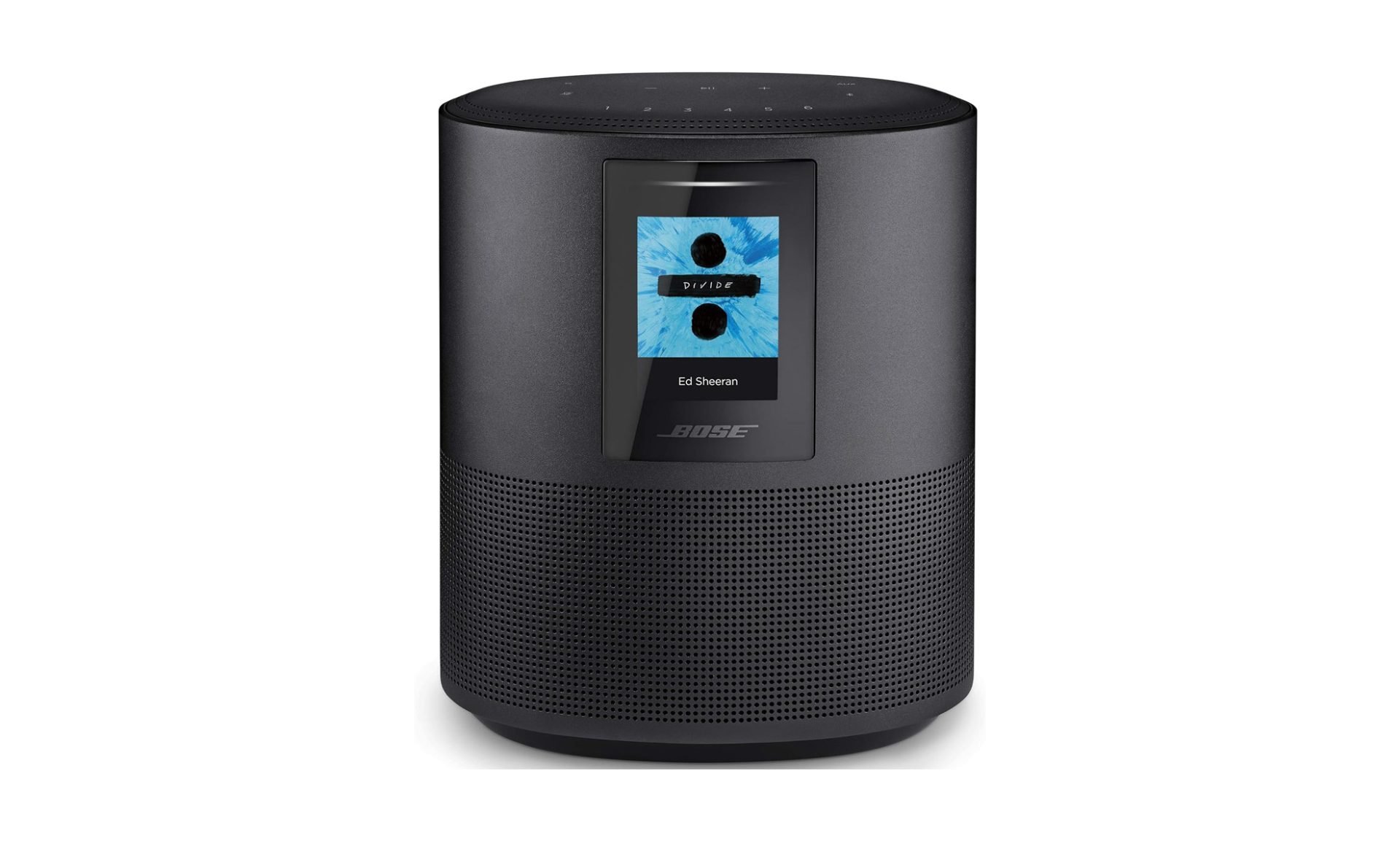
BOSE Home Speaker 500
With eight built-in microphones, the BOSE Home Speaker 500 effectively receives voice commands in almost any environment.
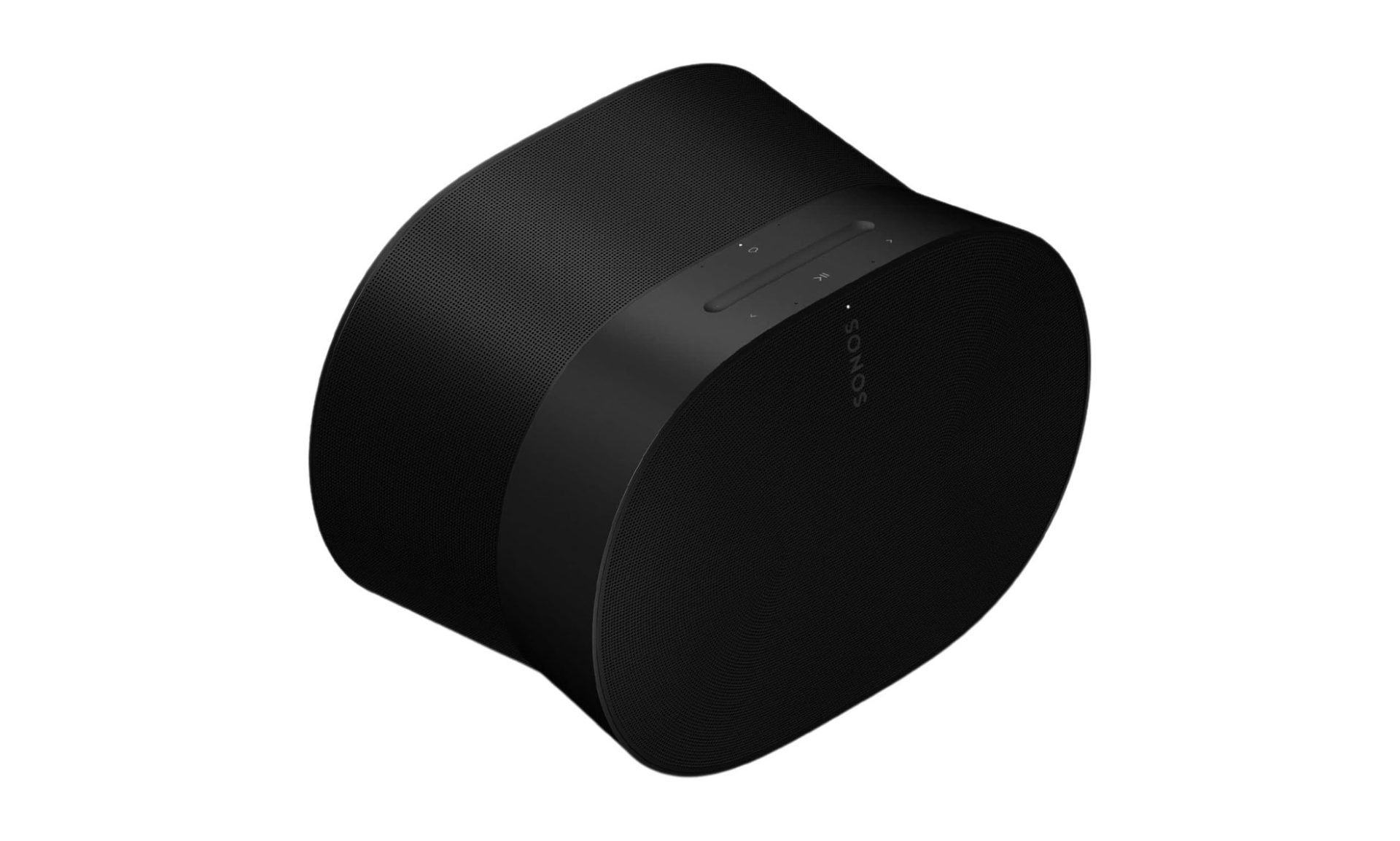
Sonos Era 300
The Sonos Era 300’s controls are comprehensive yet easy to use – making it well-suited for the average homeowner.

JBL Authentics 500
With high-fidelity sound, the Authentics 500 is a premium speaker that provides rich, deep sound with pristine clarity.
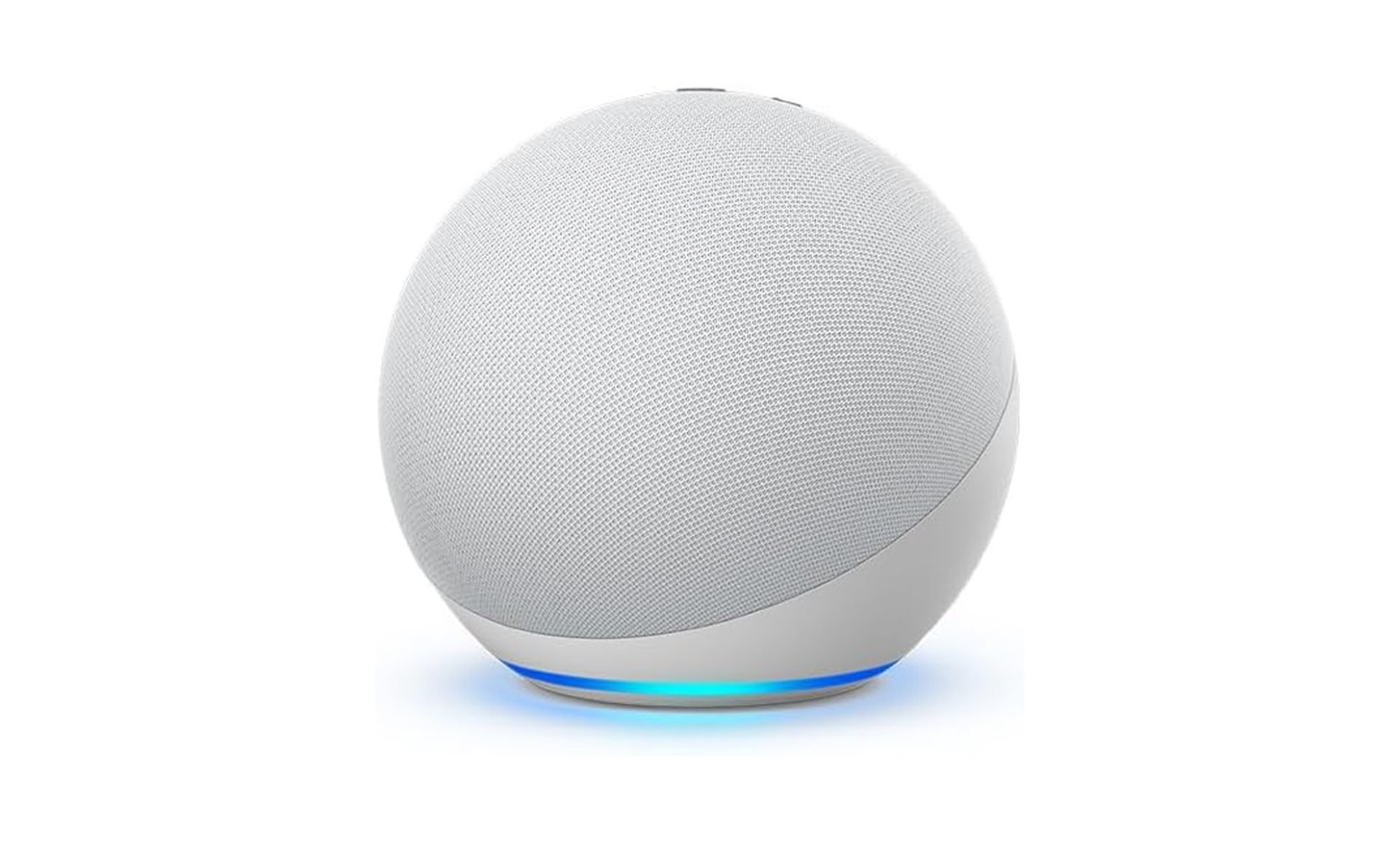
Amazon Echo
The Amazon Echo is an affordable smart speaker that performs better than its price point may suggest.
What Makes A Speaker Smart?
Smart speakers are defined by their inherent technological advances, the most important of which is a direct internet connection. Many portable Bluetooth speakers released in recent years incorporate voice assistants but aren’t true smart speakers, lacking internet connectivity. In addition to an internet connection, smart speakers need to offer technology that benefits the user, such as multiroom support.
The 6 Best Smart Speakers
While smart speakers have become more popular in recent years, there are still just a few models worth purchasing. These speakers are reliable, have comprehensive features, and have impressive sound quality.
1. JBL Authentics 500

The Authentics 500 is JBL’s flagship smart speaker, featuring a unique Quadrex grille design that’s only found in the Authentics series. It incorporates an eco-friendly approach using recycled materials as part of the build. Physical controls are limited, as the Authentics 500 is best controlled using the JBL One mobile app.
Enjoy a variety of streaming options with the Authentics 500’s broad platform support which includes Spotify Connect, Tidal Connect, Amazon Music, and Chromecast support. Create a comprehensive home audio network by placing an Authentics 500 in different rooms of your home. With its reliable Wi-Fi connectivity, it’s well-suited to broad home networks. JBL has added Bluetooth 5.0 to the Authentics 500, allowing for low-latency Bluetooth connections too.
The audio performance separates this speaker from others on the market, with a deep, powerful sound that even audiophiles can appreciate. The 6.5″ downward-firing subwoofer gives a hefty thump in the low end. For the midrange, it has three 2.75″ drivers, while the highs are pristinely handled by three 1″ tweeters. The result is a speaker that excels in clarity, dynamics, and depth. This is the best-sounding smart speaker on the market.
2. Sonos Era 300

Sonos is renowned for its focus on high-quality sound and superb design. The Era 300 is one of the company’s latest smart speakers, catering to the most demanding customers with a broad soundstage and lots of detail audible in each track. While the speaker’s aesthetics can be polarizing, its unique design is one of practicality, forming the base of what allows for its wide sound spread.
The controls are easy to use and feature track skips (forward and backward), play/pause, and volume control. Of course, the Era 300 supports voice assistance, with built-in Alexa to assist you through voice prompts. It also offers broad streaming support (Spotify, Pandora, Apple Music, Amazon Music, and Tidal). Additionally, the Sonos Era 300 supports Apple AirPlay and Sonos Radio.
True to Sonos style, the Era 300 distinguishes itself from other smart speakers in its sound quality. It can fill most kitchens and bedrooms with sound, and using two of them can provide full room coverage for large living rooms. It has an impressively balanced sound signature with flat mids and treble, though some beefiness in the low end gives the speaker a boomy bass. The sound spread is excellent, but some compression artifacts are present at high volume levels. It supports Dolby Atmos for spatial audio, creating more depth and nuance to the music you listen to.
The Sonos Era 300 is a strictly AC-powered speaker with no built-in batteries. It has Wi-Fi support that provides for effective multiroom and whole-home systems, as well as Bluetooth 5.0 for direct wireless connections.
3. Bose Home Speaker 500

The Bose Home Speaker 500 is an excellent home smart speaker that incorporates a unique LCD into its design, letting you check the time, details about the track you’re listening to, and various details about the speaker’s current settings. It is a wired speaker that doesn’t offer battery support, but it excels as a dedicated home smart speaker.
The controls are discreetly laid out across the top of the speaker with subtlety, providing easy control over the track, volume, and more. A standout feature is the control mapping ability, which lets you program up to 6 different actions using the app- for quick, simple control.
The Home Speaker 500 features a decent frequency response but lacks brightness and deep bass. Some elevation in the upper bass tuning gives a punchy sound but falls short of the Sonos Era 300. As this speaker sports a 360-degree design intended for a broader sound spread, it’s no surprise that the soundstage is impressive, making it well-suited for use anywhere in your room without excessive consideration of the required audio coverage.
Bose’s comprehensive array of microphones ensures that the speaker can accurately interpret your voice commands anywhere in the room and can do so in fairly high levels of ambient noise. It supports Alexa and Google Assistant, providing broad compatibility. Aside from the built-in Wi-Fi connection used to tie the Home Speaker 500 to your other home smart devices, the speaker also includes Bluetooth 4.2 for alternative wireless connections.
4. Amazon Echo

For an affordable smart speaker that performs outside its price point, the Amazon Echo (4th Gen) is an excellent option. It integrates many of the best features of the Echo Studio while being available for close to half the price. The primary difference between the two is that the Amazon Echo (4th Gen) is much smaller and lighter, partly due to the reduced driver size. The Echo Studio is a larger speaker that has more volume to it, while the Echo (4th Gen) is better suited for smaller rooms where less volume is required.
The Amazon Echo has an LED light near the bottom of the speaker, which adds some flare to the aesthetic. This light is only active when performing certain tasks like voice control and offers no customization.
Despite the similarity in features to the Echo Studio, the Amazon Echo (4th Gen) has a very different sound signature. This speaker has a boomy low-end with elevated upper bass but lacks the vibrant treble to balance out the sound, resulting in a warm, less defined sound. The soundstage performs better on the Echo than the Echo Studio, but at high volume levels, the Echo Studio does much better with its impressive dynamics.
It supports both Wi-Fi and Bluetooth connectivity, allowing for easy control, especially when using the supported mobile app.
5. Sonos One (Gen 2)
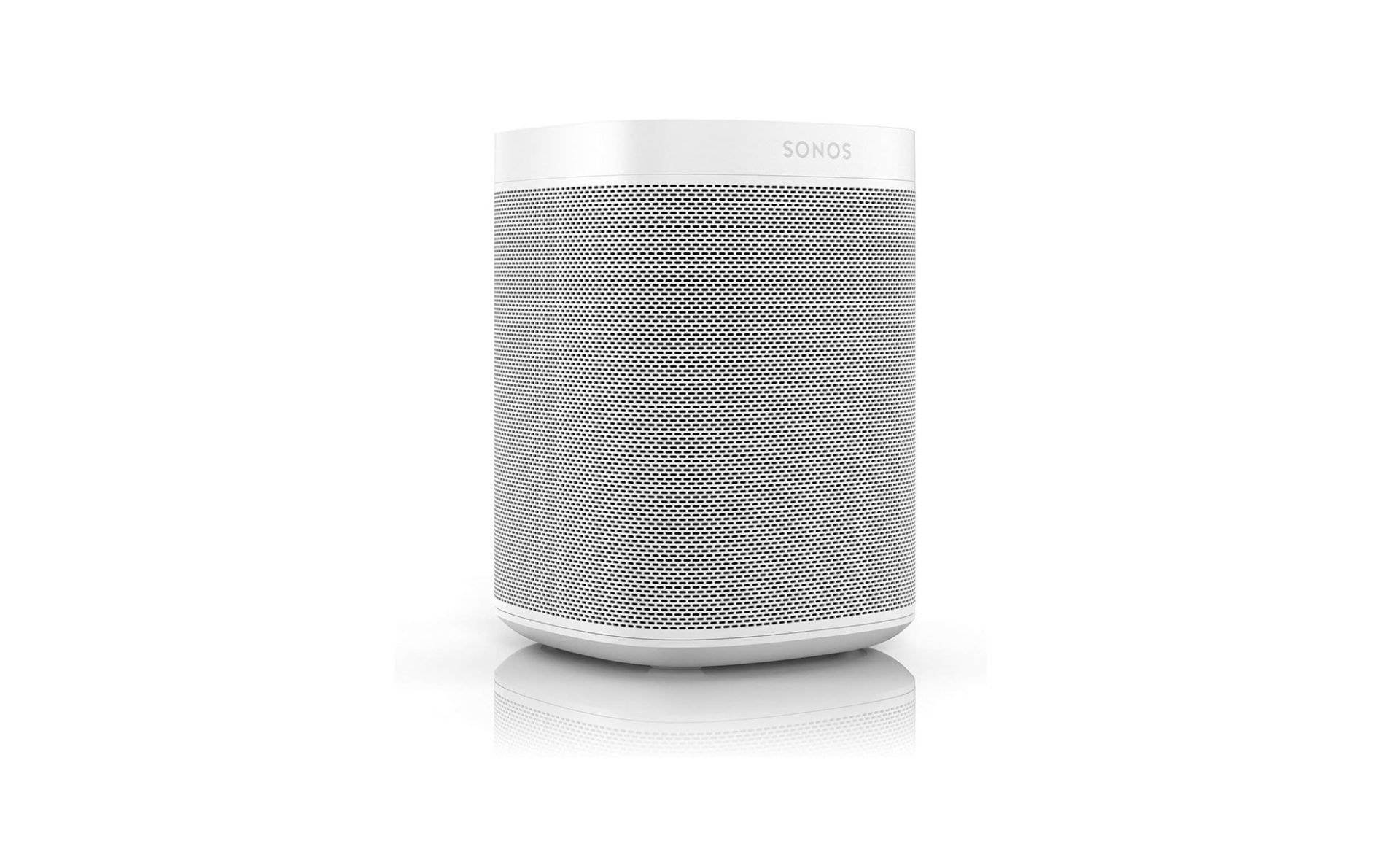
If you love the ecosystem nature of Sonos products but don’t want to fork out for the premium Era 300 – the Sonos One (gen 2) is a good budget alternative for a home smart speaker. Its design is more traditional than the Sonos Era series and can blend easily into any room of your home. It is easy to use with the controls at the top of the speaker, allowing for play/pause, volume control, track skipping, and grouping the speaker with another for a large ecosystem.
It has versatile voice assistant integration with native support for both Amazon Alex and Google Assistant. There are also comprehensive streaming options, with Apple Music, Pandora, Spotify, and YouTube all supported by the speaker.
Like the Sonos Era, this speaker doesn’t incorporate a battery into its design and is specifically made for home use. Because it’s a relatively affordable speaker, you can effectively use it to establish comprehensive smart ecosystems without breaking the bank.
There are noticeable differences in sound quality between the Sonos One (Gen 2) and the Era 300. The Era 300 is the better-sounding speaker, with superior frequency response, dynamics, and soundstage – but these improvements come at a marked price difference. Still, the Sonos One Gen 2 performs well for its price – with a punchy upper bass and balanced midrange and treble. It’s not as loud as the Sonos Era 300 and is better suited for casual listening and smaller room sizes.
There are some sacrifices made in soundstage and dynamics, with the Sonos One Gen 2 having a somewhat narrow soundstage and doesn’t support stereo sound, with audio being output in mono.
6. Amazon Echo Studio
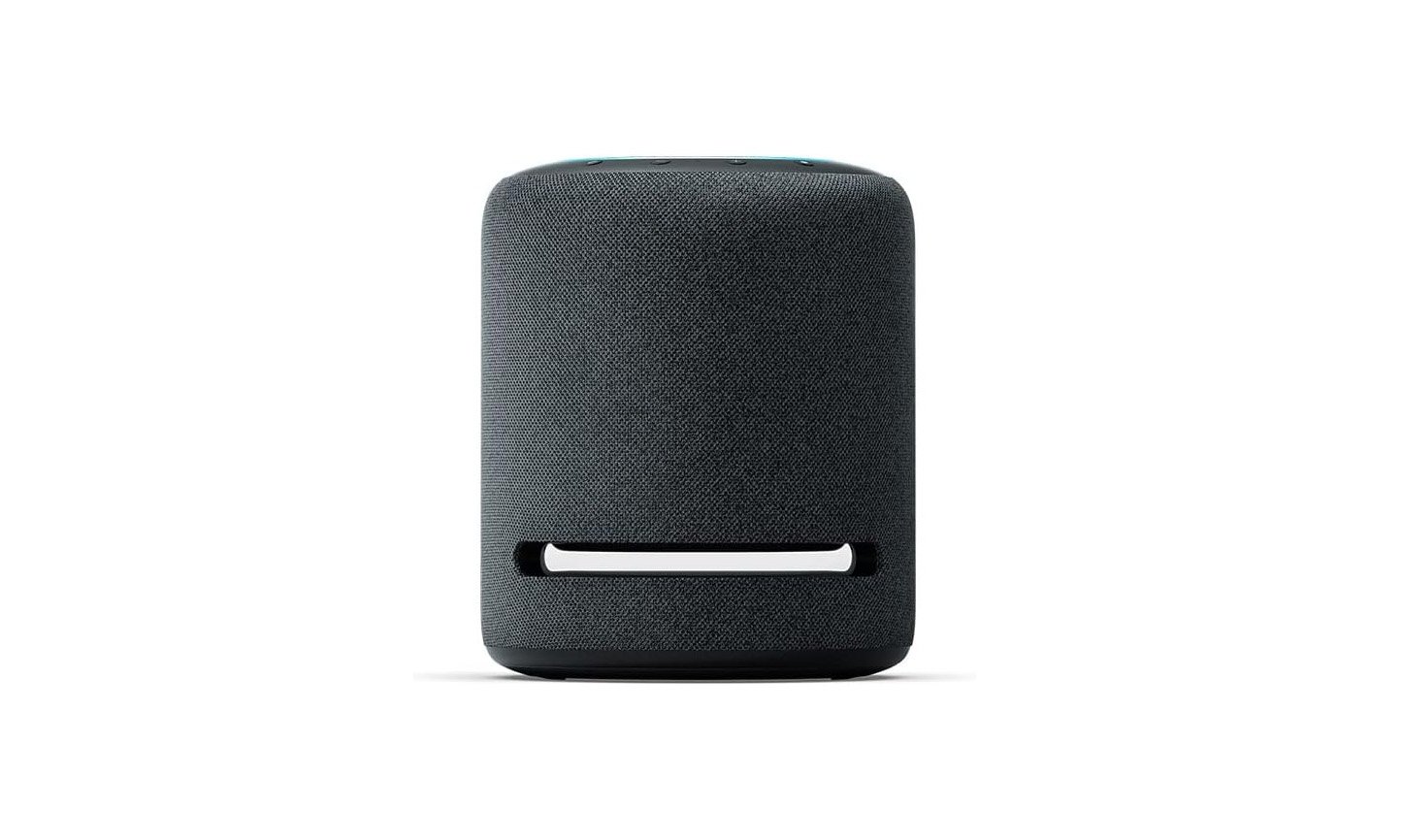
At around $200, the Echo Studio is Amazon’s premium home smart speaker, featuring a cylindrical design with LED light wrapped around the top. Like most other home smart speakers, the Echo Studio is a wired speaker without a battery, reducing its portability. As an Amazon product, it’s unsurprising that the Echo Studio only supports the Alexa virtual assistant.
While the built-in controls are sufficient for most assistant purposes, there are limited audio controls with no play/pause button and no track skip buttons. You can use voice controls to perform these actions or use the speaker’s Bluetooth connectivity with your mobile phone. The Echo Studio supports various streaming services, including Spotify, Apple Music, Pandora, and more.
In terms of performance, the Echo Studio has a balanced midrange with recessed highs and a lack of deep bass. The upper bass remains present, giving a tight punch to tracks, but the depth falls short of a few other smart speakers on this list, particularly the Sonos Era 300. The soundstage is good, with stereo support and wide dispersion, but the dynamic limitation results in reduced clarity at high volume levels. The Echo Studio is best suited for casual listening and relatively small room sizes, like bedrooms and kitchens.
A Buyer’s Guide To Smart Speakers
When buying a smart speaker, there’s more to consider than just how it sounds and the build quality. The extent of smart features offered and their ability to integrate with your home environment are just a few considerations to remember. In this short buyer’s guide, we’ll help you pinpoint what’s important.
Wi-Fi Connectivity
Wi-Fi connectivity is essential in smart speakers. It’s not uncommon for retailers to inaccurately label speakers with voice control as smart speakers – so ensuring Wi-Fi connectivity is supported is paramount. A smart speaker’s access to the internet is required to perform many of its tasks and to bridge the user to the web in a useful way. Wi-Fi is also what allows for effective multi-room setups.
Multi-Room Support
A multiroom audio setup connects multiple speakers across different rooms of one’s home, allowing a single source device to play audio through any of the connected speakers. It allows the user to enable and disable audio for particular rooms and to control that room’s sound from any room in the house.
While theoretically possible with Bluetooth, multiroom support uses your local Wi-Fi network to maintain control over the speakers. Wi-Fi has a broader range and can be boosted with standard extenders and mesh systems. Bluetooth is better suited for direct line-of-sight.
Voice Assistants
Voice assistants use voice prompts to trigger actions, such as performing searches, answering questions, and even online shopping. They are a defining feature of smart speakers and have also begun to be introduced to traditional Bluetooth speakers in recent years.
Voice assistants are particularly useful for home speakers as they let you multitask. In the kitchen, preparing dinner and unable to check your phone to ensure the recipe you’re following is correct? That is no problem; a voice assistant can help you by reading the recipe and instructions based on your voice prompt.
It’s important to note that there are three prevalent voice assistant models: Siri (Apple), Alexa (Amazon), and Google Assistant. Most smart speakers will support a single voice assistant type, though a few also support multiple versions. While you don’t need to match your existing technology to your voice assistant, it can offer easier configuration and broader integration.
Here are some more examples of what you can do with a voice assistant:
- Make and receive phone calls
- Provide news updates
- Provide severe weather emergency updates
- Set reminders and alarms for you
- Control audio playback
- Play games like trivia
Streaming Services
Many of the best smart speakers include streaming service support, such as AirPlay or Spotify Connect. This lets you stream your favorite tracks directly from the supported service, all through your Wi-Fi connection. If streaming is important to you, ensure the speaker you buy has suitable streaming support.
Bluetooth
Most smart speakers do not offer Bluetooth, with most opting for a WiFi-only approach. From an engineering standpoint, Bluetooth is somewhat redundant when the speaker has Wi-Fi. However, many users still want the flexibility that comes with Bluetooth; after all – more devices support Bluetooth connectivity than Wi-Fi. If you don’t want to always rely on having a WiFi connection, opt for speakers that also support Bluetooth.
Sound Quality
Usually, we place sound quality high on the list of importance. With smart speakers, the importance of sound quality will vary depending on how you plan to use your speaker. For some, the smart speaker is a way to tie together their home technology and provide a central point of control, with the sound quality being secondary to its features. For others, a detailed and clear sound is essential, and the speaker’s features are simply an additional benefit.
Microphone
Microphones form the core of any good smart speaker. Many of these speakers use multiple microphones to ensure that the user can activate voice prompts from any direction. Additionally, the effectiveness of the smart speaker’s microphone in accurately interpreting voice commands in areas of high background noise is paramount.
Frequently Asked Questions
Because smart speakers are a relatively new technology, many homeowners feel unsure about whether they have the technical capabilities to use one. Despite their advanced technology, smart speakers are relatively easy to use. Still, we’ve put together some FAQs to help educate on their use.
How Do Smart Speakers Work?
Smart speakers connect to your home Wi-Fi network, acting in a similar way to how you would on a computer, except the device does the work for you and relies on voice prompts to achieve these actions. They can also be used to control other speakers in your home and using supported apps lets you establish a comprehensive home audio network.
What Are Smart Speakers Used For?
These versatile speakers aren’t used for any one reason. The broad application potential from smart speakers is at the core of their design, facilitating casual music listening, home automation or even for use as a kitchen assistant when cooking.
How Secure Are Smart Speakers?
Smart speakers are generally secure, but there are considerations to keep in mind. As with many mobile phones, the device is constantly listening for voice prompts to know when to wake up and offer assistance. There are also considerations around data collection and risks of hacking, but these concerns exist in most network-connected devices and aren’t exclusive to smart speakers.
How Popular Are Smart Speakers?
Smart speakers are relatively new to the audio industry, but we have seen an increase in use over the last 2 to 3 years. It is expected that smart speakers are going to become more popular as we continue integrating technology into our daily lives.





